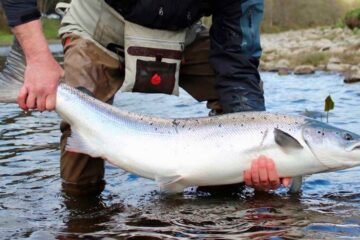Scotland is taking its first big step toward introducing a visitor levy in Fife, which could generate up to £8 million annually and support everything from heritage preservation to tourism upgrades.
In a cautious yet deliberate move, Fife Council has opened formal talks about implementing a tourist tax. The aim? To reinvest in the local economy, protect its iconic landmarks, and deal with the growing costs of hosting millions of visitors every year.
A long road ahead—but the wheels are turning
Fife’s cabinet committee gave the green light to begin exploring the idea, kicking off what’s expected to be a multi-year process. Nothing’s set in stone yet. But just getting the conversation going marks a turning point.
The consultation phase alone is expected to stretch over nine months, with feedback gathered from businesses, residents, and tourism stakeholders. Only then will a full report be presented to the council in January 2026.
If Fife Council decides to proceed? There’s still an 18-month lead-in time before a penny is collected.
That puts the earliest rollout at April 2028.

The legal groundwork was already laid
Scotland isn’t starting from scratch here. Last year, Holyrood passed the Visitor Levy (Scotland) Act, giving local councils the authority to charge overnight guests staying in paid accommodations.
It’s a big shift in how tourism is managed.
Now, cities and counties can legally collect money through hotels, B&Bs, holiday lets, and other tourist lodgings. The fee would be collected at the point of sale and passed on to local authorities.
One sentence here.
Revenue, crucially, can only be used for tourism-related projects.
Where the money could go—and why it matters
The potential £8 million windfall wouldn’t just sit in a vault somewhere. The goal is to reinvest it back into the visitor economy. Locals and tourists alike could see the benefits.
Here’s what the funds might support:
-
Maintaining historic landmarks and natural beauty spots
-
Upgrading public amenities and local transport systems
-
Launching promotional campaigns to attract off-season tourism
-
Funding community events and festivals that draw international visitors
There’s already precedent. Edinburgh’s version of the levy is more advanced, with officials moving ahead on their own timeline under the same legislation. And across the UK, other councils are watching closely.
Other cities show it’s possible—and profitable
While Scottish cities have new powers, English councils are still stuck in legislative limbo. But some aren’t letting that stop them.
Manchester, for example, introduced a City Visitor Charge through an alternative legal route. It applies to hotels with a rateable value of £75,000 or more, adding £1 per night to guests’ bills.
It’s already working. In its first year, the charge brought in £2.8 million, according to the BBC.
A quick one-liner here.
Globally, it’s even more common. Big-name tourist destinations have long leaned on visitor levies to manage their booming tourism scenes.
| City | Tax Per Night (4-star hotel) | Applies To |
|---|---|---|
| Barcelona | €4.95 | Overnight guests |
| Paris | €8.13 | Overnight guests |
| Venice | €5.00 | Day visitors only |
| Amsterdam | 7% of room rate + €3 | Overnight guests |
In Venice, the tax helps control crowds. In Amsterdam, it offsets the social costs of mass tourism. Fife hopes to strike a similar balance—without chasing away visitors.
Locals and businesses will have their say
The next few months will be crucial.
Fife Council says it wants to avoid steamrolling through a policy that could hurt small businesses or price out local attractions. That’s why the consultation phase is expected to be extensive.
Tour operators, guest house owners, shopkeepers, and everyday residents will all get a chance to weigh in.
Some are concerned about the impact on off-season trade. Others welcome the chance to improve local infrastructure and protect fragile areas under pressure from tourism footfall.
One sentence paragraph to break it up.
What everyone agrees on, though, is that something needs to give.
Sustainable tourism isn’t just a buzzword anymore
Let’s face it: Scotland is popular.
Fife, with its coastal paths, charming towns, and the historic pull of St Andrews, draws in millions. But hosting that many people doesn’t come cheap. Roads wear down. Trash piles up. Historic sites need constant care.
The push for a tourist tax isn’t about being anti-tourist. It’s about sustainability.
And let’s be real: most travelers are used to these kinds of charges. For many, it’s no different than paying an airport tax or a resort fee.
Tourism in Scotland brought in £5.5 billion in 2023, according to VisitScotland. Even a small levy could generate big returns without scaring anyone off.
Local councils just want a share to help keep things running smoothly.
What makes Fife’s approach different
Unlike some top-down schemes, Fife’s strategy feels more grassroots.
It’s not rushing. It’s listening. And it’s focusing on reinvestment, not revenue.
That community-led style might make it a national blueprint if things go well. Especially if the funds clearly go back into things people can see and use.
We’ll know more come January 2026, once the consultation wraps up and the official report lands on the table.
But make no mistake—Scotland’s tourism landscape is shifting. And Fife’s small step might just lead the way.


















